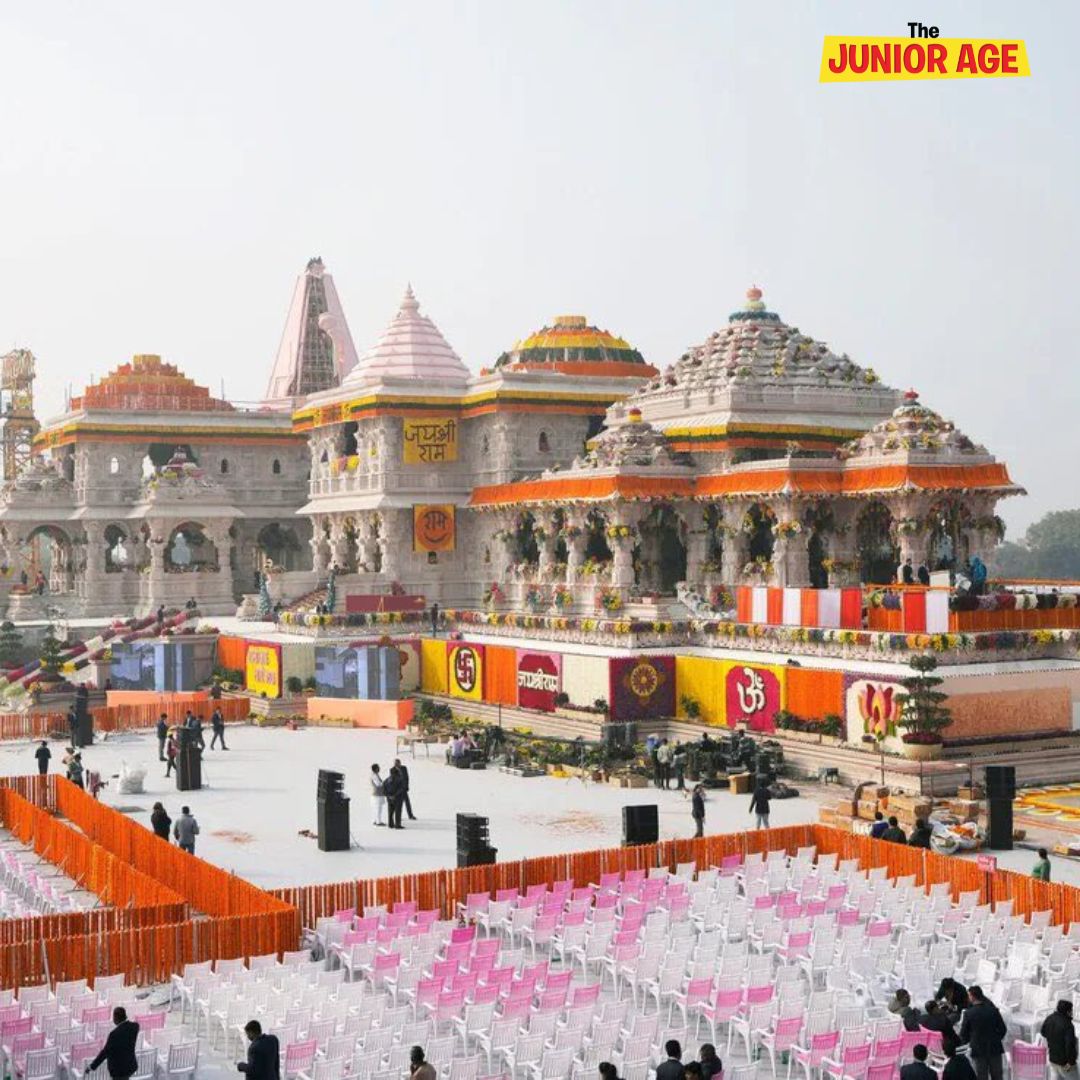The consecration ceremony or the “Pran Pratishtha” of the infant Lord Ram idol on January 22 at the newly and partially built Ram Mandir in Ayodhya is a historic moment. Prime Minister Narendra Modi presided over the consecration ceremony. The event was also telecasted live in many cities across India. The temple opened for devotees from January 23.
Also read, 2024 Is A Leap Year
The Ram Temple is considered as one of the most important pilgrimage sites for Hindus, as Ayodhya is considered the birthplace of Lord Ram.
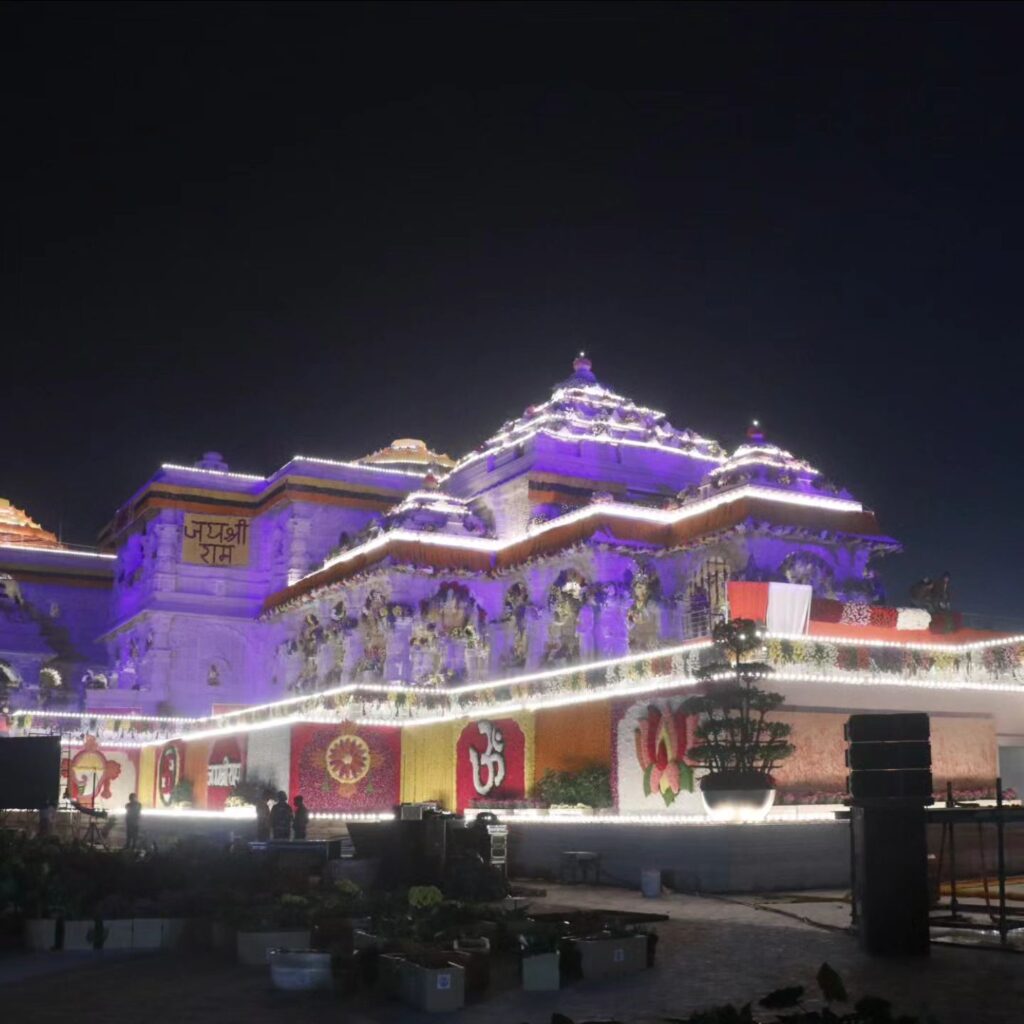
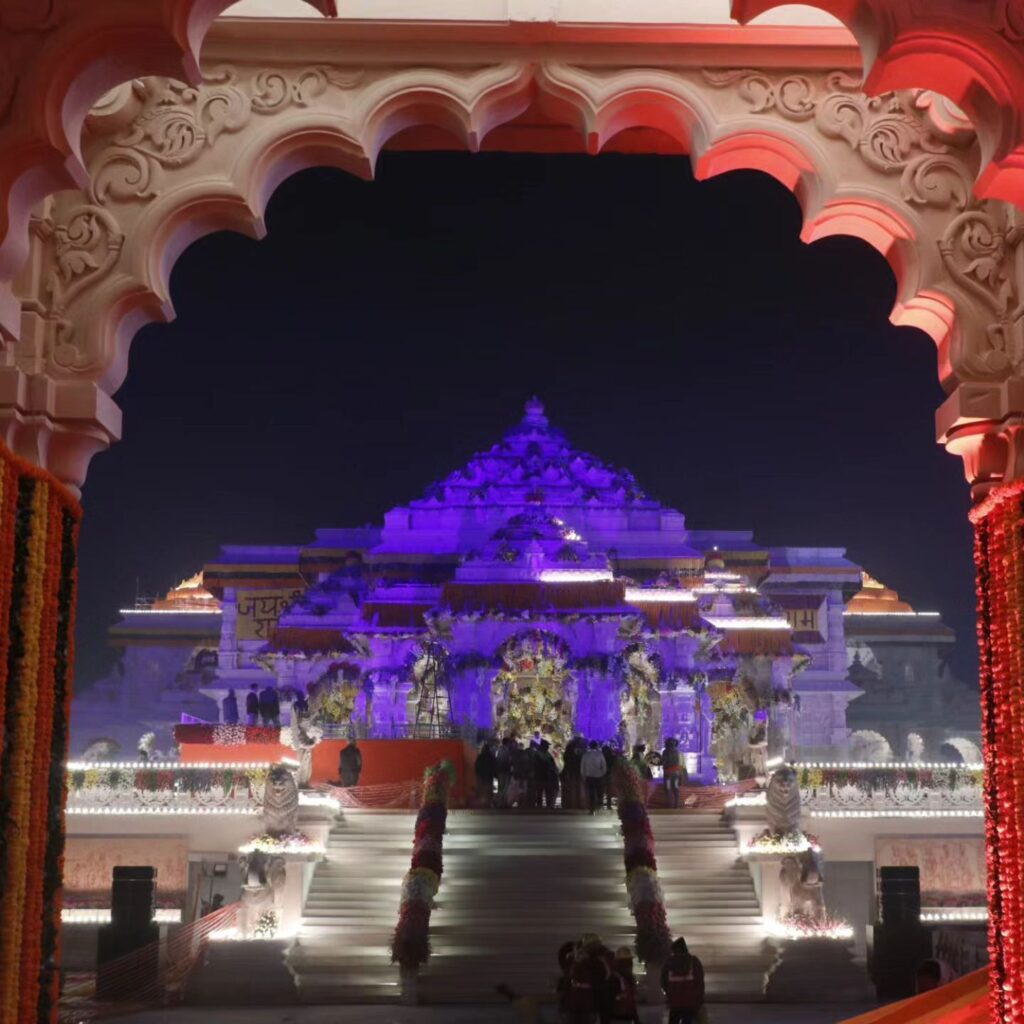
What is Pran Prathistha?
Pran Pratishtha is a Hindu ceremony where the divine presence is invited into a temple’s idol. This ceremony turns a building into a temple and makes it a place of worship.
Shri Ram Janmabhoomi Teerth Kshetra is a trust set up for the construction and management of Ram Mandir in Ayodhya by the Government of India in February 2020. This trust organised Prana Pratishtha ceremony.
Facts About the Construction of the Ram Temple | Ayodhya Ram Mandir
The three storey Ram Temple is being constructed in the traditional Nagara style architecture. It is one of the two main styles of Hindu temple architecture. Nagara style originated in the 5th century in northern India.
The Ram Temple has been built at an estimated cost of Rs 1,800 crore and the temple complex is built on an overall area of around 71 acres approximately. The Ram Mandir has a length (east-west) of 360 feet, a width of 235 feet, and a height of 161 feet.
Pink sandstone from Mirzapur and the hills of Bansi Paharpur area in Bharatpur district of Rajasthan has been used for construction of the main structure of the temple.
The main temple is constructed on 2.67 acres of land with 392 pillars. The temple also has 46 teakwood doorways. 42 of these doors will be coated with 100 kg gold.
There are five Mandaps or halls – Nritya Mandap, Rang Mandap, Sabha Mandap, Prarthna Mandap, and Kirtan Mandaps.
The main entrance of the temple is on the eastern side, and devotees will have to climb 32 stairs through the Singh Dwar.
For protection against ground moisture, a twenty one feet high plenty has been constructed using granite.
It is reported that no iron or steel has been used for the construction of the temple.
Ramps and lifts have been constructed for the elderly and physically challenged devotees.
The construction of Ram Temple is being done using traditional and indigenous technology, with emphasis on conservation of water and environment.
70% of the 70 acre temple complex has been left green.
The temple has been built to endure the strongest earthquakes and most intense flooding.
The Ram Mandir has been constructed by Larsen & Toubro. The construction project has been managed by Tata Consulting Engineers Limited.
The foundation stone for the Ram Mandir was laid by Prime Minister Narendra Modi on August 5, 2020.
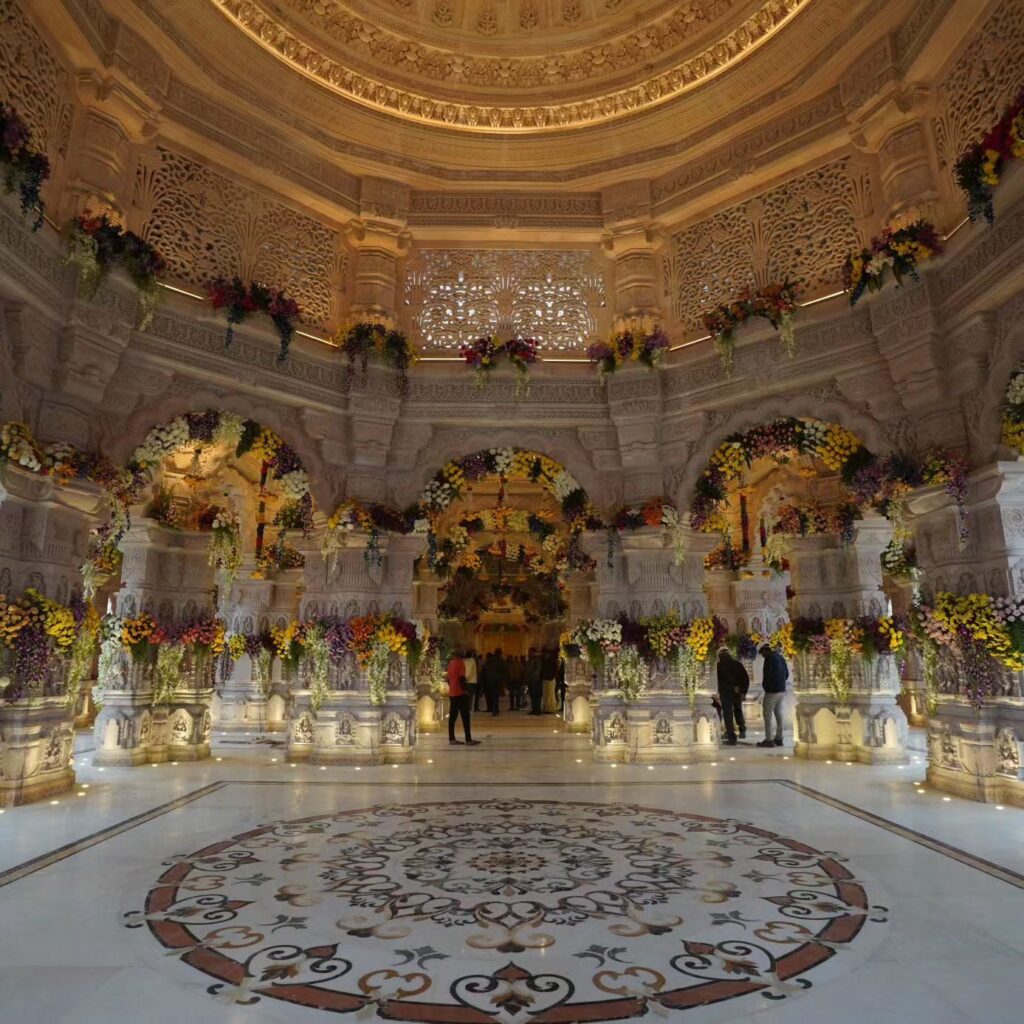
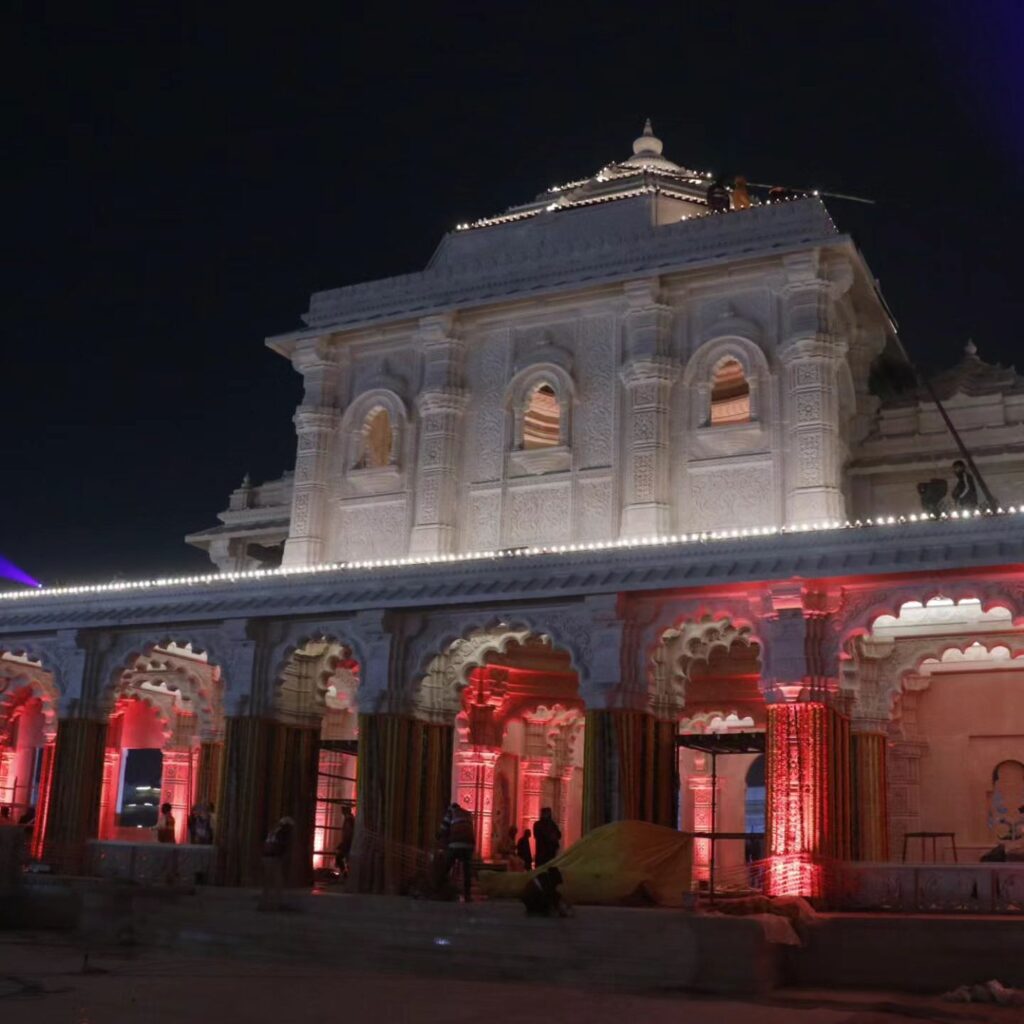
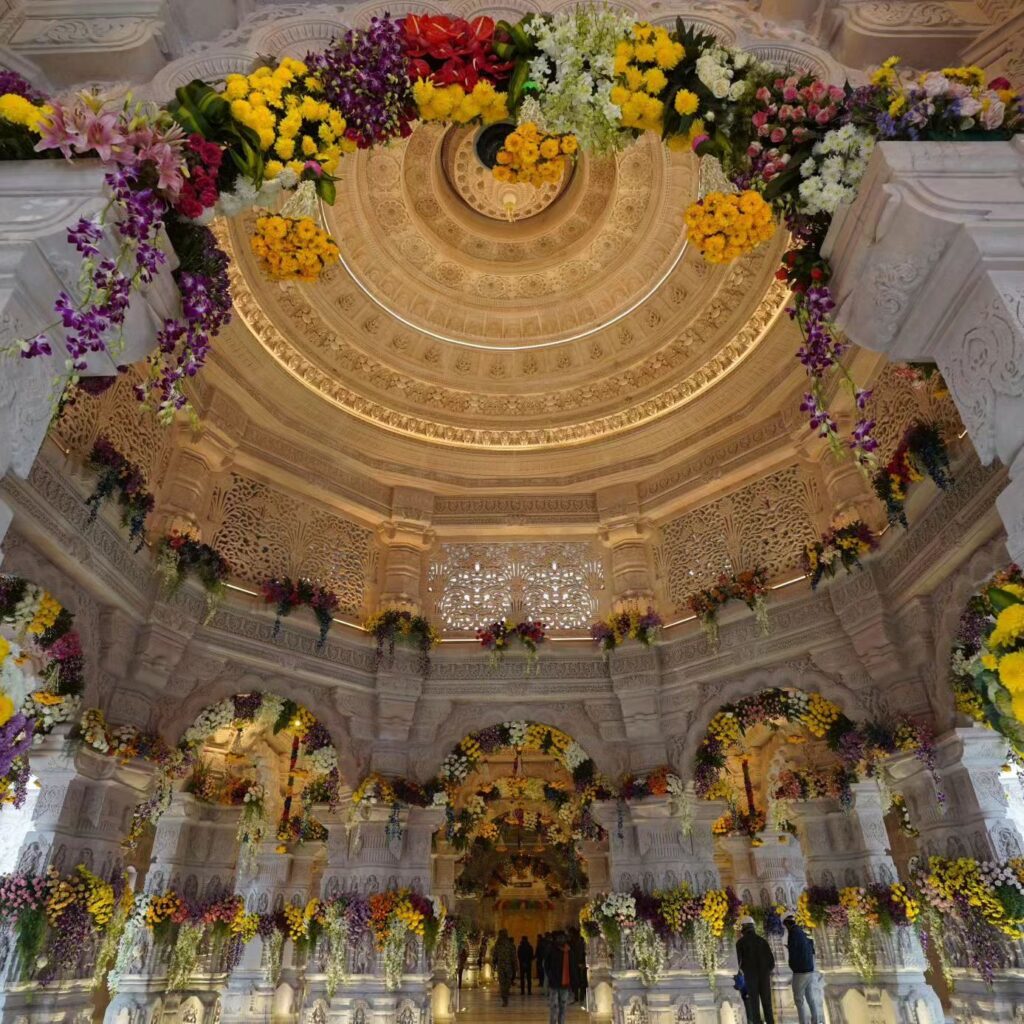
Architects of the Temple
Ram Temple has been designed by famous architect Chandrakant Sompura. He comes from a famous family of temple architects, Who are known for crafting more than 100 temples worldwide, including the Somnath Temple. He was helped and supported by his sons Ashish and Nikhil.

Facts About The Idol of Infant Lord Ram
The Ram Lalla or the infant Lord Ram idol depicts Lord Ram as a 5-year-old child. The infant Lord Ram idol is 51 inches tall and weighs around 150-200 kg.
The idol has been adorned in yellow dhoti made of Banarsi fabric, with a red patka embellished in pure gold zari.
The idol has been sculpted from Krishna Shila stone. The stone is black in appearance and is called Krishna Shila due to its identical colour as that of Lord Krishna. The stone was excavated from Gujjegowdanapura village in Mysuru.
The idol was created by sculptor Arun Yogiraj, who is from Mysuru, Karnataka.
Here are some Fun facts about Ram Temple in Ayodhya:
- The pillars and walls showcase intricately sculpted depictions of Hindu deities, gods and goddesses.
- The four corners of the “parkota” i.e. the rectangular compound wall will be dedicated to Sun God, Goddess Bhagwati, Lord Ganesh and Lord Shiva.
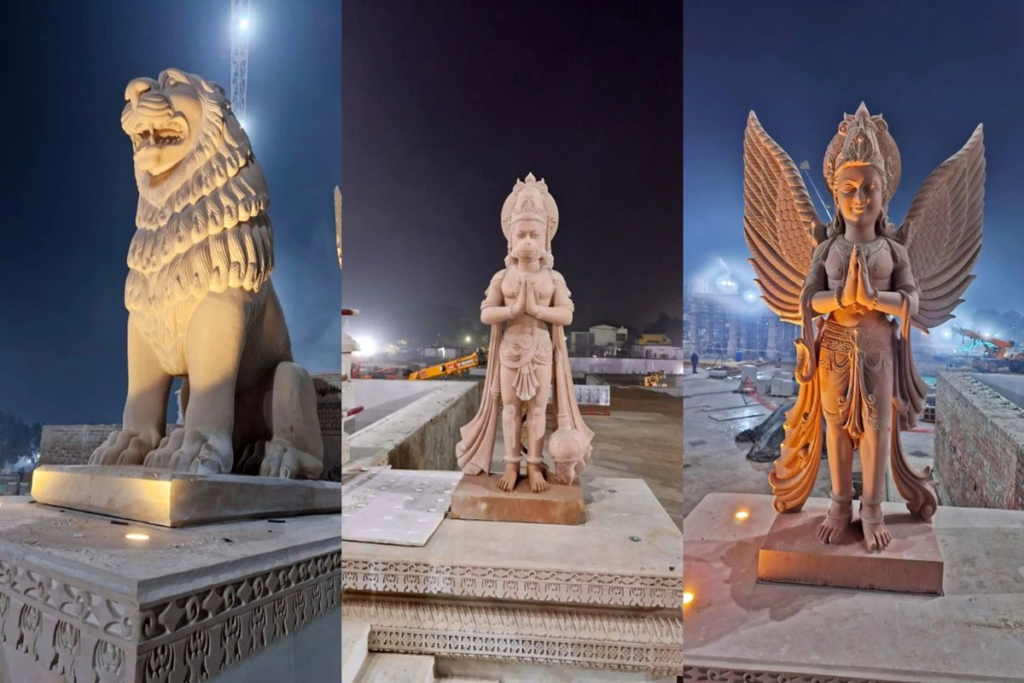
- The temple complex will also include seven shrines dedicated to sages maharishi Valmiki, Vashishtha, Vishwamitra, Agastya and Nishad Raj, Shabari, and Ahilya. They were all associated with Lord Ram’s life.
- The foundation of the Ram Temple was constructed using the holy soil of 2,587 regions like Jhansi, Golden Temple, Chittorgarh and Yamunotri and many more.
- It is reported that Thailand has sent soil for the consecration ceremony. This is symbolic of Lord Ram’s legacy transcending international boundaries.
- Special bricks known as “Ram Shilas” have been used for the construction of the temple. These bricks are inscribed with the words “Shri Ram” on them. This is inspired from the mythic rocks of the Ram Setu from the epic Ramayan.
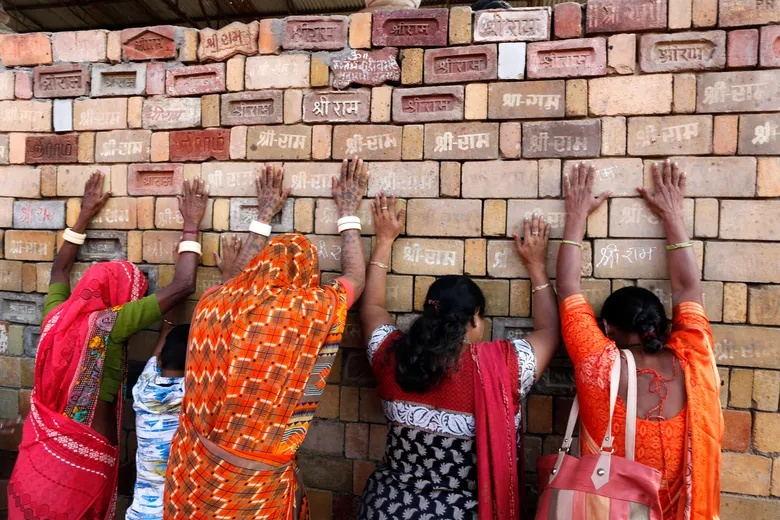
- A time capsule has been buried 2,000 feet below the ground under the temple. This time capsule includes a copper plate inscribed with relevant information about the temple, Lord Ram, and Ayodhya, preserving the temple’s identity for future generations!
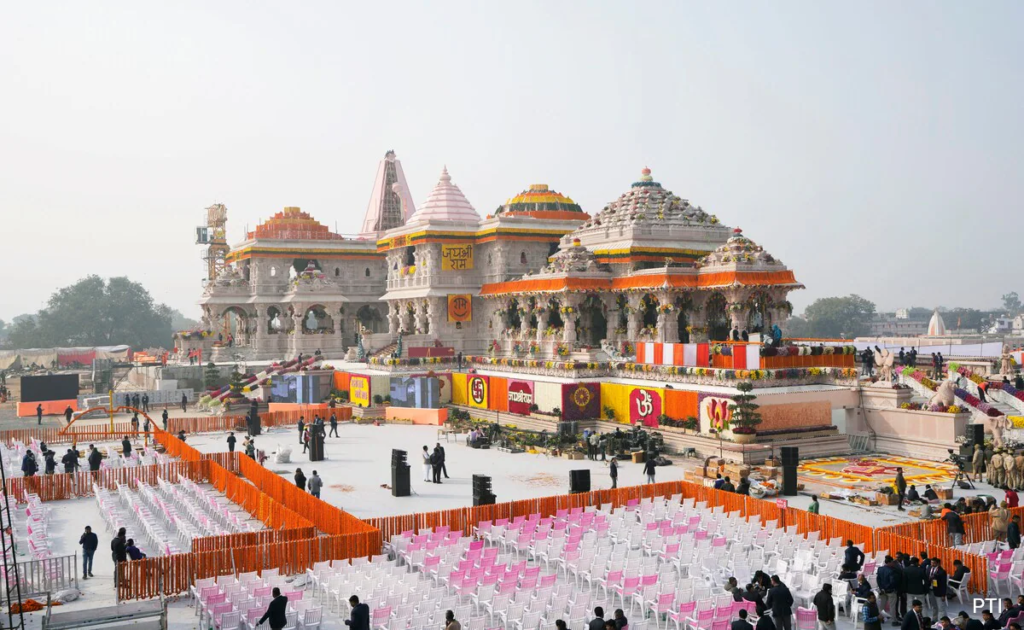
- The final construction of the Ram Mandir will be completed by December 2024.
Also watch full video on, Interesting Facts About The Drafting of the Constitution of India | History of Indian Constitution

